Feel the charms of Echizen earthenware with all five of your senses. The largest pottery market in Fukui Prefecture.
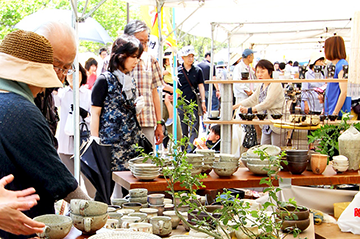
Thank you for visiting the tourism site for Echizencho, a country town in Fukui Prefecture. It's a pleasure to have you, and welcome to Echizencho.
Echizen-town is a town with a population of 23,000 people, located in the northern area of the western region of Fukui Prefecture, one of the 3 prefectures located in the Hokuriku region.
During the great unification in the Heisei period, 4 villages were merged together. The former Echizencho, Odacho, Miyazakimura, and Asahimachi were joined together and thus the new "Echizencho" was born.
The port town of Echizen, which brings food to the table for those in Fukui Prefecture, has a brand that represents the entire prefecture, Echizen, known for things such as the Echizen crab and Echizen daffodils.
Oda is the birthplace of Oda Nobunaga's clan, and both Tsurugi Shrine and Ninomiya in Echizen-Kuni enjoyed times of prosperity there.
Echizen's traditional pottery arts have been kept alive with the one of the six ancient kilns of Japan in use in Miyazaki.
Asahi is home to rich history and culture through the number of temples and shrines left behind by the high monk Taichō.
The "sea" is represented by the sea breeze from the pleasant sea of Japan, the land carries with the scent of nostalgic "earth," and lastly, the culture nurtured by the friendly "village."
All of these aspects have come together so that you may enjoy the varied culture and landscapes of Echizencho.
In terms of scale, the town is by no means big.
There is no JR or train station in Echizencho, and there isn't a highway running through the town either. Only a few buses visit the town each day, so it is a rather inconvenient town to visit.
Nevertheless, over 2 million people visit this modest 20,000 person town each year.
Delicious food and water are commonplace here. Clean air. Idyllic woodlands, and a vibrant port town. Look for the things you can do while you're in Echizen which you cannot do in a big tourist destination.
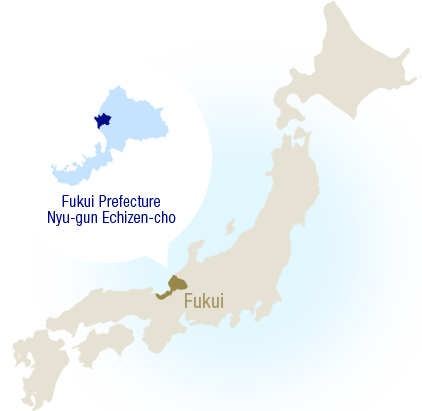
The king of flavor in winter from the Echizen coast, the "Echizen Crab."
Echizen Crab is well known across the country as the top brand for snow crab, and the catch in Echizen is prized as the best in Fukui Prefecture.
The Echizen Coast is but one* of the three major birthplaces for the Japanese daffodil, with an area of 60 to 70 hectares, the largest in Japan.
When they are in full bloom, an expanse of lovely white flowers spread across the slopes on one side.
The three birth places for Japanese daffodils...the Echizen Coast in Fukui Prefecture, Awaji Island in Hyogo Prefecture, and Bōsō Peninsula in Chiba Prefecture.
★Daily necessities are rustic, sturdy, and have taste
Echizen earthenware items were used as daily necessities, with jars, earthenware pots, and mortars as the 3 main utensils.
The soil used in crafting the Echizen earthenware utensils contains lots of iron, so that when heated, the surface turns a dark brown/reddish brown when it is made into pottery.
For this reason, Echizen earthenware items were unlikely to leak, and so in addition to being used for storing liquids like water and alcohol, and dyes like aizome, etc., they were also used to store grains and preserve food.
★This place has continued to be a pottery village since the late Heian period
The birth of Echizen's pottery history dates back to approximately 850 years ago, during the late Heian period.
Originally, the people in the region baked earthenware pots, but the technique of Tokoname ware was introduced in the late Heian period.
Echizen earthenware was quite celebrated in its heyday, towards the end of the Muromachi Period when they had the largest kilns in the Hokuriku region and the largest on the Sea of Japan, however it faced a gradual decline in the mid-Edo period, and production volume shrank.
After the Second World War it regained attention and was counted as one of the six ancient kilns* of Japan, and also many potters gathered from all over the country because of the establishment of Echizen pottery village. Currently we are attempting to craft a variety of new pottery that utilizes the traditions of baking earthenware.
New history is being added to the Echizen pottery village area.
《 From the Fukui Prefectural Museum of Ceramics website http://www.tougeikan.jp/about-ware.html 》
*The six ancient kilns of Japan... Bizen ware, Shigaraki ware, Tokoname ware, Seto ware, Tamba ware, and Echizen ware came from the six ancient kilns



The village and sea come together to form 5 hot springs spots in Echizencho.
Watch the sunset over the Sea of Japan while listening to the birds chirping from the surrounding forest.
Do not rush or you will not savor the experience, instead, please bask in relaxation and comfort.



★Echizen Onsen
The hot springs of the Echizen coast area are referred to as the Echizen Onsen.
There are the Tamagawa Onsen, Kuriya Onsen, and the Nanbu Onsen, all popular hot springs due to their good views of the Sea of Japan.
○Tamagawa Onsen [ Day-Trip Bathing Facilities ]
>Echizen Onsen "Nagisa Hot Springs"(Japanese Page)
○Kuriya Onsen [ Day-Trip Bathing Facilities ]
> Echizen Onsen Open-Air Bath "Isaribi"(Japanese Page)
> Echizen Onsen "Hot Springs Road"(Japanese Page)
○Nanbu Onsen [ Day-Trip Bathing Facilities ]
> Echizen Onsen Open-Air Bath "Sea of Japan"(Japanese Page)
★Hanamizuki Onsen
The hot spring's water has very rejuvenating quality, so you can soak while looking out over the idyllic countryside.
○Day-Trip Bathing Facilities
> Echizen Pottery Village Hanamizuki Onsen "Wakatake"(Japanese Page)
★Itou Onsen
One of the features of these hot springs is its alkaline rich hot water, which leaves skin feeling smooth. You can hear the wind blowing and the birdsong coming from the trees in this pleasant, popular open-air bath.
○Day-Trip Bathing Facilities
> Echizen Itou Onsen " Taichō no Mori"(Japanese Page)
"Echizen Ninomiya Tsurugi Shrine" has been enshrined as the birthplace of the Oda Nobunaga clan.
Please consider the history and culture of Echizen, such as the many shrines and temples established by the high monk Taichō, a forefather of the Sangaku Shinko.
★Oda Nobunaga Statue "Echizen Ninomiya Tsurugi Shrine"
Oda, Echizencho, which houses Tsurugi Shrine, is known as the birthplace of the of ancestors of Oda Nobunaga, whose illustrious family acted as village headsman of the Oda, Echizencho private farm estates and served as priests of Tsurugi Shrine.
In the Ouei era, the military governor of the Shiba clan of Echizen at the time had discovered the talents of a child born to priests at Tsurugi, and dispatched him to Owari.
At this time, they had named themselves "Oda" by taking the name of their birthplace.
★Virtuous priest of Yue, Temples and Shrines of the High Monk Taichō
The high monk Taichō was born in the Asuka period (the end of the 7th century), in Ozu, Echizen (now Fukui City, Sanjuhasshacho, Taichō-Ji Temple).
He was said to be a prodigy at a young age, and when he was 14 years old, in response to seeing the eleven-faced Goddess of Mercy Juuichimenkannon in a dream, he spent time training in his hometown of Ochisan. After an arduous penance, it was said that he was finally able to realize the teachings of Buddha.
After being the first to climb Mt. Hakusan he was known as the father of Hakusan worship and the father of Sangaku Shinko (mountain worship).
Taichō had left behind many legends, and had been praised as "the virtuous priest of Yue" when he had passed in Ochisan in the year 767. He was 86 years old at the time.
○Ochisan/Ochi Shrine
Ochi Shrine (Ochi Jinja) is the shrine at the summit of Ochisan.
It is said to be a sacred mountain where the gods meet, and known as the mountain where the high monk Taichō, known with love and respect as the virtuous priest of Yue, had trained and obtained the enlightenment of Buddha.
○Asahi Kannon Fukutsuji Temple
Many are familiar with Kannon of Asahi, a temple opened by the high monk Taichō 1300 years ago in the Nara period and remains open now.
From the slightly elevated Mt. Asahi, weather permitting, you can see Mt. Hakusan, on which Taichō founded a temple.



The Echizen Coast has been designated as a national park. To the north is Tōjinbō, a series of basaltic cliffs on the Sea of Japan, to the south is the coastline of Suizu, Tsuruga, and on the western edge of Echizen Misaki, the Kuzuryu River flows to the northern land and empties into the Sea of Japan in the shape of a gentle "V." The coastal beauty of the strangely shaped rock formations, such as the natural large-tunnel "Kochoumon", etc., which were formed by erosion due to the wind and waves, attracts visitors to the area, mainly Echizen Misaki.
Pottery markets, fireworks shows, lantern festival floats, and taiko drumming celebrations. Festivals with rich, unique traditions liven up the town of Echizen.

Feel the charms of Echizen earthenware with all five of your senses. The largest pottery market in Fukui Prefecture.
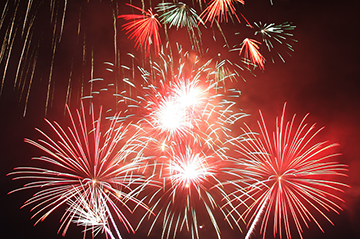
Fukui summer, from Echizen. The fireworks show of the summer that sets the first sparks for the prefecture.
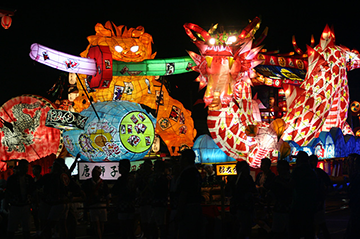
The hot summer gets even hotter. The compelling paper lantern floats roll about.
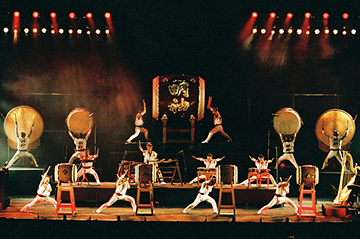
The drums of the town, let's go to Oda. A celebration of taiko drumming.
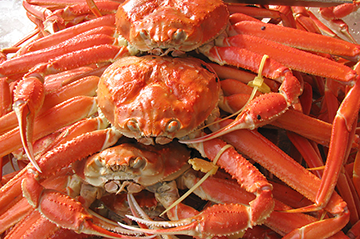
Biggest celebration of Echizen crab in Fukui prefecture.
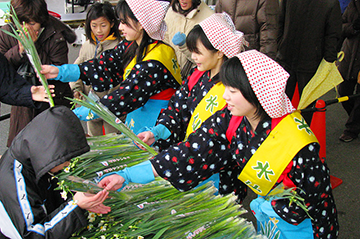
Please enjoy Echizen's two major specialties, daffodils and crab.